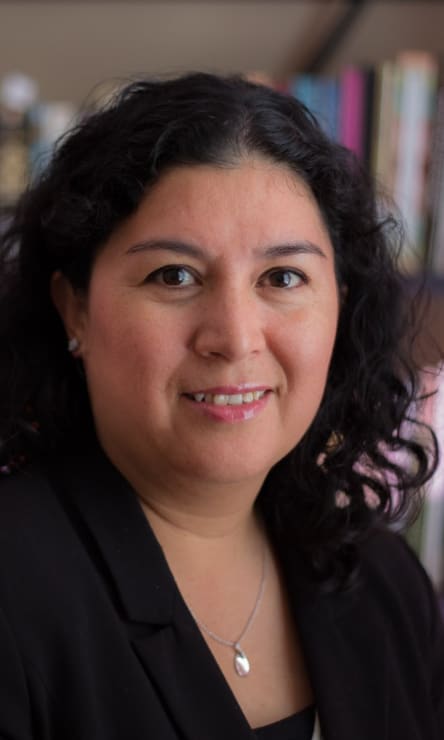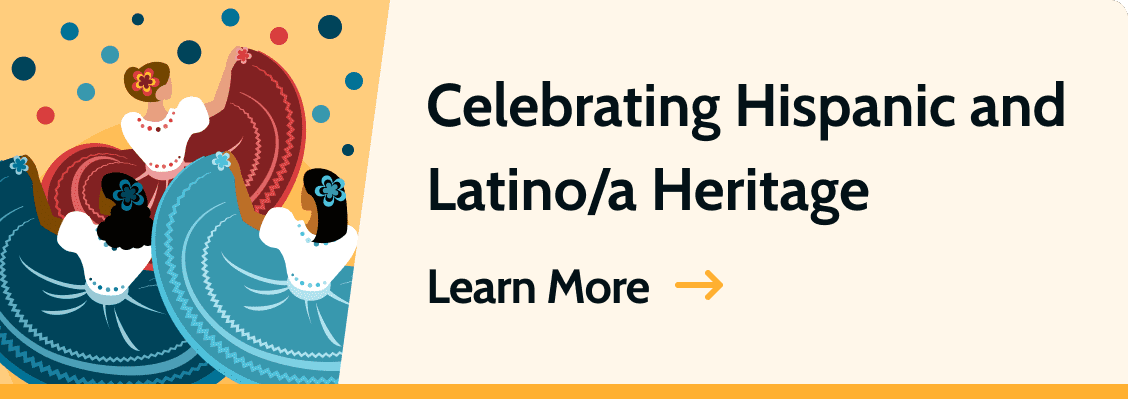College Guide for Hispanic and Latino/a Students
America has never been more diverse. In 2021, the U.S. population included 62.6 million Hispanic and Latino/a people, according to the U.S. Census Bureau. Hardly homogenous, this diverse community traces its lineage to Spain, Mexico, Central America, South America, and Spanish-speaking Caribbean countries.
Hispanic and Latino/a students have made significant gains in higher education over the last few decades. However, hurdles related to systemic inequity, college affordability, and financial aid access persist. The pandemic has also exacerbated and created challenges.
This guide covers how Hispanic and Latino/a students can gain access to resources and scholarships that may help make college more attainable.
Key Trends for Hispanic and Latino/a College Students
- Percentage of Hispanic Students in College on the Rise: According to the National Center for Educational Statistics (NCES), the percentage of Hispanic students enrolled at degree-granting postsecondary schools has increased dramatically over the last 40 years. In fall 1976, just 4% of U.S. residents enrolled in degree-granting postsecondary institutions identified as Hispanic. That number increased to 19% in fall 2017. In 2019, NCES reported 36% of Hispanic 18-24-year olds were enrolled in college.
- Hispanic and Latino/a College Student Enrollment, by the Numbers: According to the NCES, the number of Latino/a and Hispanic students attending college increased from 3.17 million in 2016 to 3.27 million in 2017.
- Fewer Latino/a Students Are Attending College Since the Pandemic: The fastest-growing college group before the pandemic, Latinx undergraduate enrollment declined by 7.3% from spring 2020 to spring 2021, as reported by the National Student Clearing House Research Center. This decline was greater than the overall decline in enrollment (-5.9%).
- A Growing Number of Hispanics Have College Degrees: The U.S. Census Bureau reports that 18.8% of Hispanics, 25 and older, hold a bachelor’s or higher degree as of 2019 — an increase from 13.9% in 2010.
What is a promising trend you see among Hispanic and Latino college students in terms of academic success and retention?

“Latino students are seeking opportunities to give back to their communities by serving as mentors for the next generation. We are seeing many successful college students return to their communities to share their experiences and help students and their families to navigate the college process. They are committed to their success.”
Challenges and Barriers to Success
- College Faculty Less Diverse Than Students: Minority faculty members remain underrepresented across all college departments, while ethnic diversity among students has grown. The NCES reported 5% of postsecondary faculty members were Hispanic in fall 2017, compared to 20% of undergraduates. Research has shown students fare better academically when they have an instructor who shares their ethnicity, race, or gender.
- Latino/as Underrepresented at Most Public Colleges: Curricula at colleges has become more diverse with the addition of diversity and global competency requirements, which include ethnic studies classes. However, Latino/as remain underrepresented at many colleges, according to a report by The Education Trust. States such as California, Texas, Florida, and New York, which have the largest Latino/a populations, do not provide these learners with the same college access opportunities as white students, according to the report.
- Hispanic Students Face Added Financial Pressures: As of 2017, Hispanic students represented about one-fifth of the U.S. undergraduates enrolled in college, according to the U.S. Census Bureau. That said, only about 57% of Latino/a students pursuing a college degree in 2012 completed it within six years. Many Hispanic and Latino/a students — especially first-generation and low-income students — are at risk of quitting college temporarily or permanently because of financial stressors.
- First-Generation and Low-Income Students Might Not Get Access To Aid: Latino/a and Hispanic students sometimes face difficulties when applying for financial aid — particularly low-income, first-generation students. The verification process that requires W-2 forms for Pell Grants may also prevent some Hispanic and Latino/a students from accessing federal financial aid.
- Lack of Support or Resources: Many Hispanic and Latino/a students have added challenges when it comes to attending college and completing their degree. For example, first-generation college students may be unfamiliar with the college application and financial aid processes. Additionally, studies show that Latino/a students who drop out of college often lack peer mentorship. These learners may also face racism and microaggressions on campus, as well as food and housing insecurities — all factors that can make it more difficult to earn a degree.
What is the biggest challenge for Hispanic and Latino/a college students today?

“In my opinion, one of the biggest challenges for Hispanic and Latinx college students today is finding a home in their campus community, both within the Hispanic and Latinx student body as well as in the campus as a whole.
Because many Hispanic and Latinx college students also identify as first-generation college students, and these students may require additional support systems throughout their college journey.”
Important Factors to Consider When Preparing for College
Choosing a College
College students typically consider many of the same things when choosing a school, including location, cost, degree offerings, and campus programs. Many Hispanic and Latino/a students also may seek colleges that foster inclusive communities and offer a diverse curriculum.
Some of the best colleges for Hispanic students offer support services and cultural programs that can help make a difference in a student’s college experience. These support services and programs often lead to higher rates of academic achievement.
Students may feel better represented at Hispanic-Serving Institutions (HSIs), where at least 25% of full-time students are Hispanic. Historically Black Colleges and Universities also embrace issues that people of color face and increasingly welcome Hispanic and Latino/a students.
Applying to College
Although some schools and programs may have different requirements, the undergraduate college application process is generally similar for most schools. The application process may include completing entrance exams, gathering application materials, and visiting a campus..
Many college applications ask candidates to divulge their ethnicity or race. This information helps track the diversity of the applicant pool for the college.
Paying for College
Part of college planning also includes understanding the total out-of-pocket cost after receiving any financial aid. Many students take out loans to help pay for their education, and the total U.S. student loan debt has reached $1.5 trillion.
Before taking out a loan to cover school costs, Hispanic and Latino/a students should try to apply for scholarships and grants. Scholarships and grants, unlike loans, don’t have to be paid back. Many programs specifically aid Hispanic and Latino/a students and students of color.
What advice would you give to fellow Hispanic and Latinx college students seeking guidance and support in college?

“If your institution has a faculty or staff member who identifies as Hispanic or Latinx, I would seek them and build a mentorship relationship with them. I would also search on the schools events and student organization platform to find the Hispano-Latinx Alliance of your school to find students who may have similar life experiences and identities.”

College Resources for Hispanic and Latino/a Students
- Federal TRIO Programs – Student Support Services: These federally funded programs — available at many schools — work to promote retention and graduation among first-generation students, income-limited students, and/or students with disabilities. Qualifying students can gain access to resources like tutoring, career guidance, and financial support.
- Hispanic and Latino/a Student Cultural Clubs and Organizations: College resources for Hispanic and Latino/a students vary depending on the college’s size and the school’s ethnic makeup. At most schools, Hispanic and Latino/a students have the option to join cultural clubs and organizations. Students in these groups can engage in networking opportunities, social events, advocacy work, and volunteerism.
- Professional Organization Chapters: Hispanic and Latino/a students can access career services through student chapters of professional organizations. For example, the Association of Latino Professionals for America works to develop the next generation of business leaders. The Latino Medical Student Association provides guidance to aspiring healthcare workers.
- Religious Groups and Clubs: Religious organizations like Destino can offer spiritual guidance to Hispanic and Latino/a students. Student-run religious clubs often operate in partnership or through the guidance of local churches. They offer community service and cultural celebrations for Hispanic and Latino/a students.
- Hispanic Greek Life: College students can find a community and long-lasting friendships through fraternities and sororities geared toward Hispanic and Latino/a students. These groups can help integrate students at campuses that may lack diversity. Building relationships can give Hispanic and Latino/a students a support system in college as they work toward their degree. These organizations also can provide a strong alumni network.
- Counseling Services: Having culturally competent school counselors can make a big difference with Hispanic and Latino/a students. Research shows that underrepresented populations, such as Latino/a college students, benefit more from college counseling — especially when students are still in high school. This support can help learners find postsecondary success.


What college resources have been most helpful to your growth and development in college?

“For me, it is not college resource offices as a whole but specific people in those offices. The former Director of the Office of Diversity, Equity, and Inclusion Jose Moreno, the Director of Student Development Programming of the Center for Experience and Opportunity Dr. Manuel Ruiz, and mental health counselor in the Wellness Center Martha Harris have all been the most helpful in my growth and development in college.”
How can colleges improve support for Hispanic and Latino college students?

“Colleges and universities must invest and support initiatives that provide intentional services for Latino/x students and provide wrap-around services to meet students where they are. It is imperative to also have representation in the administration, faculty, staff, and student body so that all can collaborate to impact policy and remove barriers. Colleges must seek community partnerships to provide support services with the “It Takes a Village” approach.”
National Advocacy Groups and Organizations for Hispanic and Latino/a Students
Latino Student Fund
Since the Latino Student Fund was established in 1994, it has provided year-round programs for some 4,000 underrepresented primary and secondary students in Washington, D.C. Student members can receive access to academic support, peer networks, English classes for their families, and college preparation.
Hispanic Scholarship Fund
The Hispanic Scholarship Fund (HSF), established in 1975, has awarded more than $650 million in scholarships to Hispanic and Latino/a students. Some 10,000 high school, undergraduate, and graduate students enroll in the HSF Scholars program each year to receive career support services, scholarships, and academic mentorship.
Excelencia in Education
Excelencia in Education, created by Latinas in 2004, works to close the equity gap by serving as a source for educational research and leadership. To promote student success, Excelencia partners with businesses, government-elected officials, colleges, the media, and advocacy groups.
UnidosUS
Founded in 1968, UnidosUS champions the Latino/a community through numerous programs. The organization offers a Homeownership Network, minimum wage and overtime protections for home-care workers, and citizenship programs. The organization also advocates for high-quality education.
League of United Latin American Citizens
Since 1929, the League of United Latin American Citizens has offered community programs and assistance, including $1 million in scholarship aid every year, literacy training, and job skills programs.
Hispanic Heritage Foundation
Created in 1987, the Hispanic Heritage Foundation offers leadership, educational support services, workforce development, and public awareness programs. Students can participate in the STEM Symposia to access workforce development opportunities and coding programs.
Hispanic Association of Colleges and Universities
The Hispanic Association of Colleges and Universities (HACU) — created in 1986 with 18 institutions — now represents 500 colleges and universities. Students can get access to career and internship opportunities through HACU’s conferences and programs.
National Hispanic Institute
Established in 1979, the National Hispanic Institute provides service and community leadership opportunities to high school and college students. The organization serves some 2,000-2,500 students every year.
MANA, A National Latina Organization
Since 1974, MANA has helped to empower Latinas and their families through leadership programs. Latina youths ages 11-18 can access mentoring services and leadership programs.
Association of Latino Professionals for America
With more than 95,000 members, the Association of Latino Professionals for America offers professional development and educational opportunities. Members can receive tuition grants to schools such as American Public University, scholarships, and fellowships.
Frequently Asked Questions for Hispanic and Latino/a Students
What is the difference between Hispanic and Latino?
Historically, Hispanics were defined as “Americans who identify themselves as being of Spanish-speaking background and trace their origin or descent from Mexico, Puerto Rico, Cuba, Central and South America, and other Spanish-speaking countries.” Alternatively, Latino/as come from or trace their heritage from Latin America.
However, these definitions are fluid and complicated by the fact that Hispanics and Latino/as often self-identify according to their own preferences — some people identify with the terms Hispanic or Latino and Latina, while others do not have any preference. A Pew Research Center study found that about 50% of Latino/as and Hispanics often identify themselves by their country of origin, such as Mexican, El Salvadoran, or Puerto Rican.
Government agencies and organizations that collect data on ethnic groups, such as the Pew Research Center, often use the terms Hispanic and Latino interchangeably.
What percentage of college students are Hispanic and Latino/a?
According to the NCES, 36% of Hispanics ages 18-24 were enrolled in college in 2018. In fall 2017, Hispanic students made up about one-fifth of all the U.S. residents who were enrolled in degree-granting postsecondary institutions.
What is a Latinx student?
In the 2000s, “Latinx” emerged as a gender nonspecific term to promote inclusivity. By 2015, the term rose in popularity in academic literature and Google searches.
Some academics use “Latinx” instead of “Latino” or “Latina” as a protest against gender binaries. Many colleges across the nation have embraced the adoption of Latinx. For example, Florida State University’s Hispanic/Latino Student Union became the Hispanic/Latinx Student Union. Columbia University’s Chicano Caucus changed its name to the Chicanx Caucus.
Outside of academic circles, the term is less common. A recent survey conducted by the Pew Research Center found that about a quarter of U.S. Hispanics had heard of the term “Latinx,” but only 3% used the term. Younger people (ages 18-29) and women were more likely to use the term.
Are there scholarships for Hispanic and Latino/a students?
College has never been more expensive than it is today, and U.S. student loan debt has never been higher. Financial aid, such as grants and scholarships, can help Hispanic and Latino/a students pay for tuition and college expenses. Organizations like the Hispanic Scholarship Fund and La Unidad Latina Foundation offer scholarship money to Hispanic and Latino/a students.
Scholarship applications may require applicants to have strong academic records with at least a 3.0 GPA. First-generation and undocumented students also can apply for the Red Thread Foundation Scholarship and TheDream.Us National Scholarship.
What Is a Hispanic-Serving Institution?
Colleges and universities are designated as an HSI after applying to determine if they meet the requirements. An HSI must have a full-time student body that consists of at least 25% Hispanic and Latino/a students in the year preceding the school’s application date.
The White House Hispanic Prosperity Initiative maintains a list of designated HSIs. These institutions qualify for discretionary grants that can be used to promote post-baccalaureate educational opportunities, STEM degrees, and educational opportunities for Hispanic students.
HSIs enroll 67% of the Latino/a undergraduates in the U.S., according to Excelencia in Education. However, although the number of HSIs has increased dramatically over the last 10 years, these institutions only represent about 18% of all colleges and universities. In the 2019-2020 academic year, there were 569 HSIs.
Meet the Student

Elva Joya is a first-generation Salvadoran student from Rockville, Maryland, attending McDaniel College. A senior psychology major with minors in biology, chemistry and Spanish, she is actively involved on campus serving as a resident assistant, President of the Hispano-Latinx Alliance, Vice-President of the McDaniel chapter of the League of United Latin American Citizens, and ambassador for the Center for Experience and Opportunity.
Her academic interests include culturally sensitive psychology and mental health treatment, as well as organic synthesis in medicinal chemistry. She strives to build community on campus as well as mentor fellow students of Hispanic and Latinx identities.
Meet the Faculty

Dr. Socorro Zaragoza is an Associate Professor of Spanish in the Department of Language and Cultural Studies, Anthropology, and Sociology at Eastern Kentucky University. She teaches all levels of Spanish language as well Latin American literature and culture classes. She earned a BA in foreign language education from the Universidad de Colima in Mexico and her master’s and Ph.D. from Purdue University with a focus on Spanish and Latin American studies.
She is a longtime advocate of diversity, equity, and inclusion initiatives, stemming from her areas of scholarship on Afro-Hispanic and U.S.-Latino Studies, as well as her commitment to representing underrepresented populations — both on EKU’s campus and in the community.
She has worked to achieve higher recruitment, retention, and graduation rates of underrepresented students through her advising and mentorship. She has been recognized for her leadership in diversity and student success, and has served as the Chief Diversity Officer for the College of Letters, Arts, and Social Sciences, and a University Diversity Fellow. She was also awarded the EKU Faculty Leadership Award.
Dr. Zaragoza currently serves as the Senior Diversity, Equity, and Inclusion Advisor to the Provost. She remains active in a plethora of efforts for student engagement, retention, and graduation.





